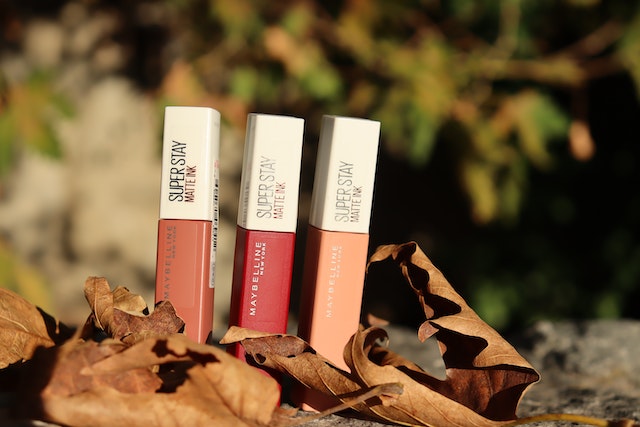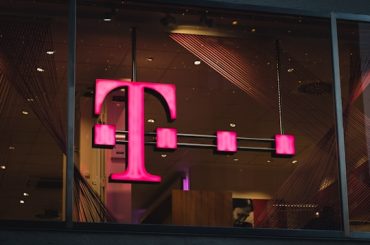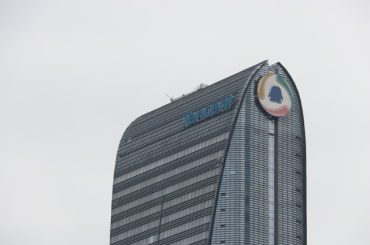Before we dive deep into the SWOT analysis, let’s get the business overview of Maybelline. Maybelline LLC is a global cosmetics brand founded in 1915 by Thomas Lyle Williams in Chicago, United States, and has been a subsidiary of French cosmetics company L’Oréal since 1996.
The company is best known for its high-quality makeup products targeting women across various ages and demographics. Since its inception, Maybelline has become one of the most recognizable and popular cosmetics brands worldwide.
Product Offerings: Maybelline’s product line includes a wide variety of cosmetics, such as foundations, concealers, powders, eyeshadows, eyeliners, mascaras, lipsticks, lip glosses, nail polishes, and other beauty tools. The brand continually innovates and launches new products to meet its global customer base’s changing preferences and needs.
Market Position: As one of the top global cosmetic brands, Maybelline holds a strong market position in the beauty industry. It competes with other well-known brands such as Revlon, CoverGirl, and Rimmel. The company has recently focused on expanding its global presence, particularly in emerging markets, to capitalize on the growing demand for beauty products.
Marketing Strategy: Maybelline employs a robust marketing strategy to reach and engage its target audience. The brand uses traditional and digital channels, including print advertisements, television commercials, billboards, and social media. Maybelline also collaborates with famous influencers and celebrities and sponsors fashion events to maintain its strong presence in the beauty and fashion industries.
Sustainability and Social Responsibility: In line with its parent company L’Oréal, Maybelline is committed to sustainable practices and social responsibility. The brand focuses on reducing its environmental footprint and increasing its use of sustainable and ethically sourced ingredients. Maybelline also supports various charitable initiatives and women empowerment programs worldwide.
Here is the SWOT analysis for Maybelline
A SWOT analysis is a strategic planning tool used to evaluate the Strengths, Weaknesses, Opportunities, and Threats of a business, project, or individual. It involves identifying the internal and external factors that can affect a venture’s success or failure and analyzing them to develop a strategic plan. In this article, we do a SWOT Analysis of Maybelline.
SWOT Analysis: Meaning, Importance, and Examples
Strengths
- Brand Recognition: Maybelline is a highly recognized and trusted brand name in the cosmetics industry. Its strong brand recognition helps attract and retain customers, creating a loyal consumer base.
- Diverse Product Portfolio: Maybelline offers a wide range of cosmetics products catering to various preferences and needs. This extensive product range allows the brand to reach a broad customer base and satisfy different customer segments.
- Continuous Innovation: Maybelline is known for its commitment to innovation, frequently introducing new products and improving existing ones. This drive to innovate helps the brand stay relevant and competitive in the ever-evolving beauty market.
- Strong Marketing Strategy: Maybelline’s robust marketing strategy, including traditional and digital channels, effectively engages and resonates with its target audience. Collaborations with influencers, celebrities, and fashion events further bolster the brand’s presence and image.
- Global Reach: Maybelline has a strong presence in numerous countries, making it a truly global brand. This extensive reach allows the company to capitalize on growth opportunities in various markets, particularly emerging economies.
- Parent Company Support: Being a subsidiary of L’Oréal, Maybelline benefits from the resources, expertise, and strong reputation of its parent company. This support enhances its credibility and provides additional resources for expansion and growth.
- Commitment to Sustainability and Social Responsibility: Maybelline’s focus on sustainability and social responsibility initiatives helps improve its brand image and attracts environmentally conscious and socially aware consumers.
- Affordable Pricing: Maybelline offers quality cosmetics at accessible prices, making the brand appealing to a wide range of customers, including budget-conscious consumers.
Weaknesses
- Intense Competition: The cosmetics industry is highly competitive, with numerous well-established and emerging brands vying for market share. This fierce competition can put pressure on Maybelline’s market position and profitability.
- Dependence on Third-Party Retailers: Maybelline largely relies on third-party retailers, such as drugstores, supermarkets, and online retailers, to distribute and sell its products. This dependence can limit the company’s control over product placement, pricing, and promotions, potentially affecting sales and customer experience.
- Limited Direct-to-Consumer Channels: Maybelline’s presence in direct-to-consumer channels, such as standalone stores and branded e-commerce platforms, is relatively limited compared to some of its competitors. This can restrict the brand’s ability to build stronger customer relationships and offer personalized experiences.
- Slow Response to Market Trends: While Maybelline is known for its innovation, the brand can sometimes respond slowly to emerging market trends and consumer preferences, such as the growing demand for clean beauty products or inclusive shade ranges. This can result in missed opportunities and potential loss of market share.
- Potential Reputation Risks: As a global cosmetics brand, Maybelline is susceptible to reputation risks, such as product recalls, controversies, or adverse publicity surrounding ingredients or manufacturing practices. Such incidents can negatively impact the brand’s image and customer trust.
- Challenges in Emerging Markets: Although Maybelline has made strides in expanding its global presence, the brand may face challenges in some emerging markets, including cultural differences, diverse consumer preferences, and local competition. These challenges can affect the brand’s growth and success in these markets.
Opportunities
- Expanding Direct-to-Consumer Channels: By increasing its focus on direct-to-consumer channels, such as standalone stores and branded e-commerce platforms, Maybelline can enhance customer relationships, offer personalized experiences, and potentially increase profit margins.
- Embracing Clean Beauty and Sustainable Products: As consumer preferences shift towards natural, clean, and eco-friendly products, Maybelline can develop and expand its range of sustainable and clean beauty offerings to meet this growing demand and attract environmentally conscious consumers.
- Inclusive and Diverse Product Offerings: By offering a more comprehensive range of shades and formulations that cater to various skin tones and types, Maybelline can appeal to a more diverse customer base and address the growing demand for inclusivity in the beauty industry.
- Collaborations and Partnerships: Maybelline can explore strategic partnerships and alliances with celebrities, influencers, or other brands to create limited-edition product lines, generate buzz, and expand its customer base.
- Leveraging Technology and Personalization: By incorporating advanced technology, such as virtual makeup try-ons or AI-driven personalized product recommendations, Maybelline can enhance the customer experience, improve engagement, and drive sales.
- Expanding into Emerging Markets: Maybelline can continue to expand its presence in emerging markets, tapping into the growing middle-class populations and increasing demand for beauty products in these regions.
- Developing Skincare Products: Diversifying into the skincare market can provide new revenue streams and cater to the increasing consumer interest in skincare and beauty products that promote overall skin health.
- Strengthening Online Presence: As e-commerce continues to grow, Maybelline can invest in strengthening its online presence, improving its digital marketing efforts, and enhancing the online shopping experience for customers.
Threats
- Intense Competition: The cosmetics industry is highly competitive, with numerous well-established and emerging brands continuously launching new products and marketing campaigns. This competition can pressure Maybelline’s market position, pricing, and profitability.
- Changing Consumer Preferences: Rapidly evolving consumer preferences, particularly in the beauty industry, can pose challenges for Maybelline. Failure to adapt to trends such as clean beauty, sustainability, and inclusivity could result in a loss of market share.
- Economic Uncertainties: Economic fluctuations, including recessions, currency fluctuations, or trade disruptions, can affect consumer spending and demand for beauty products, impacting Maybelline’s sales and profitability.
- Regulatory Changes: Changes in regulations and laws, particularly regarding the use of certain ingredients, animal testing, or packaging requirements, could impact Maybelline’s product formulations, manufacturing processes, or supply chain, leading to potential increased costs or compliance challenges.
- Counterfeit Products: The presence of counterfeit products in the market can erode Maybelline’s brand reputation, customer trust, and, ultimately, sales.
- Online Retail Disruption: The growth of e-commerce and online retailers can disrupt traditional retail channels, requiring Maybelline to adapt its distribution and marketing strategies to maintain visibility and competitiveness in the digital space.
- Supply Chain Disruptions: Risks related to supply chain disruptions, such as natural disasters, geopolitical tensions, or pandemics, can impact the availability of raw materials, manufacturing processes, or product distribution, leading to potential increased costs or delays in product availability.
- Reputation Risks: As a global cosmetics brand, Maybelline is susceptible to reputation risks, such as product recalls, controversies, or adverse publicity surrounding ingredients or manufacturing practices. Such incidents can negatively impact the brand’s image and customer trust.









